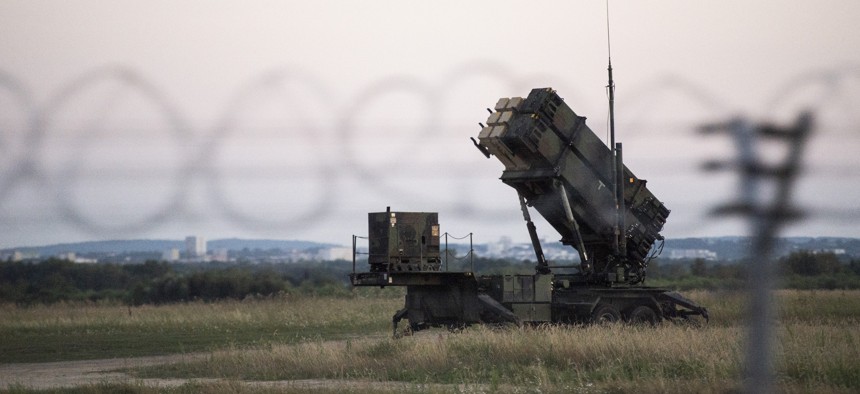
A MIM-104 Patriot air-defense system guards the Rzeszow airport near Poland's border with Ukraine in July 2022. Several countries have pledged to send their own Patriots to Ukrainian forces. Photo by Christophe Gateau/picture alliance via Getty Images
Expect Big Replenishment Orders Soon, Army Tells Industry
February and March should bring contracts to replace weapons sent to Ukraine, acquisition chief says.
The Pentagon is preparing to place a number of large orders in coming months to replenish U.S. stockpiles drained of billions’ of dollars worth of weapons and military equipment given to Ukraine over the past year, the U.S. Army’s top weapons buyer said Wednesday.
“There are going to be several big awards coming in February and March that will just move us further down that path,” Doug Bush, assistant Army secretary for acquisition, logistics, and technology, said at a Pentagon briefing.
The move is sure to be welcomed by companies who have routinely mentioned the slow pace of replenishment orders, but which have also struggled to produce weapons fast enough to satisfy commanders and civilian leaders.
Of the $30-plus billion that Congress has appropriated to help Ukraine and rebuild U.S. stockpiles, only about $6 billion has been put on contract, Raytheon Technologies CEO Greg Hayes told CNBC on Tuesday.
“We've seen $2 billion so far, but we still haven't seen a Patriot contract,” Hayes said. “We haven't seen some of the replenishment orders yet.”
The United States, Germany, and the Netherlands have all pledged Patriot interceptors to Ukraine.
Lockheed Martin CFO Jay Malave said his company has received about $1.5 billion in replenishment orders.
“We've got a line of sight to significantly more orders beyond that, that we'll see…in the outer years,” Malave said.
Questions remain about whether companies and their fragile supply chains are ready for more big orders.
But some companies have self-funded improvements to assembly lines or ordered parts in advance of anticipated orders. L3Harris Technologies, for example, spent $16 million to lay in supplies to get a head start on expected orders for counter-drone systems for Ukraine.
Lockheed Martin executives also said the company is making investments to speed up weapons production.
“We have had contract funding and internally funded projects to make sure we can meet higher ramp rates, whether it's HIMARS, GMLRS, PAC-3, all of those, are all opportunities from where we are today and part of the investment that our customer is making and that we are making to drive the higher ramp rates,” Malave said.
Meanwhile, Bush said the Army and DOD are working quickly to get the orders in.
“We're working around the clock to fulfill Ukraine's priority security assistance needs,” Bush said.
Bush said the Army is “well ahead of standard DoD timelines on getting funding obligated” for the weapon replenishment orders. “I do believe we are capable of ramping up quickly because we're doing it right now.”
Bush said several provisions of the recently passed 2023 National Defense Authorization Act are reducing contracting red tape. Congress also authorized the Pentagon to buy in bulk across multiple years, something Pentagon acquisition chief Bill LaPlante has said that would persuade companies to improve and expand and improve weapon factories.
“With the new authority from Congress regarding multi-year procurements, that's another way to get accelerated production because with a guaranteed funding stream industry can do more on their side, working with our suppliers to buy parts,” Bush said.
Officials are also working to identify hard-to-get weapon parts.
“An entire missile, for example, might not take 18 months to produce, it might be really just one component that takes 14 of those 18 months,” Bush said.




